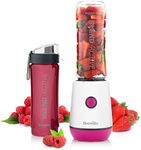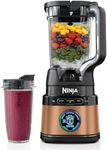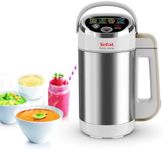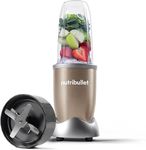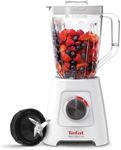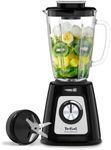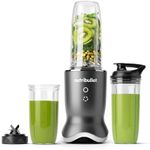Buying Guide for the Best Smoothie Makers
Choosing the right smoothie maker can greatly enhance your smoothie-making experience, ensuring you get the perfect blend every time. When selecting a smoothie maker, consider your lifestyle, the types of smoothies you enjoy, and how often you plan to use it. Understanding the key specifications will help you make an informed decision that aligns with your needs and preferences.Power (Wattage)Power, measured in watts, determines how efficiently a smoothie maker can blend ingredients. Higher wattage means the blender can handle tougher ingredients like ice, frozen fruits, and fibrous vegetables with ease. Typically, smoothie makers range from 200 to 1500 watts. For simple fruit smoothies, a lower wattage (200-500 watts) may suffice. However, if you plan to make green smoothies or crush ice regularly, consider a model with at least 600 watts or more to ensure smooth blending without straining the motor.
CapacityCapacity refers to the volume of the blending jar, usually measured in liters or ounces. This is important because it dictates how much smoothie you can make in one go. Smaller capacities (around 0.5 to 1 liter) are ideal for single servings or small households, while larger capacities (1.5 liters and above) are better for families or those who like to prepare multiple servings at once. Consider your typical serving size and how many people you usually prepare smoothies for when choosing the right capacity.
Blade Material and DesignThe material and design of the blades affect the smoothie maker's ability to blend ingredients smoothly. Stainless steel blades are durable and resistant to rust, making them a popular choice. The design, such as the number of blades and their angle, can influence blending efficiency. More blades or uniquely angled blades can enhance performance, especially for tougher ingredients. If you frequently blend hard or fibrous ingredients, look for a smoothie maker with robust, well-designed blades to ensure consistent results.
Speed SettingsSpeed settings allow you to control the blending process, which can be crucial for achieving the desired texture. Basic models may have just one or two speeds, while more advanced ones offer multiple speed options and even pulse functions. If you enjoy experimenting with different textures or ingredients, a smoothie maker with variable speed settings can be beneficial. For those who prefer simplicity, a model with fewer settings might be more suitable.
Ease of CleaningEase of cleaning is an important consideration, especially if you plan to use your smoothie maker frequently. Some models have dishwasher-safe parts, which can save time and effort. Others may have self-cleaning functions, where you simply add water and a drop of dish soap, then run the blender to clean it. If convenience is a priority, look for features that simplify the cleaning process, ensuring you can enjoy your smoothies without the hassle of extensive cleanup.
Noise LevelNoise level can be a significant factor, particularly if you live in a shared space or prefer a quieter environment. Smoothie makers can vary widely in how much noise they produce. Generally, more powerful models tend to be louder, but some are designed with noise-reduction features. If noise is a concern, consider looking for models that specifically mention quiet operation or have user reviews highlighting their low noise levels.

